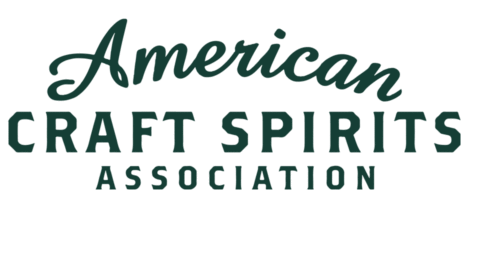Amy Greenberg, Director
Regulations and Rulings Division
Alcohol and Tobacco Tax and Trade Bureau 1310 G Street NW, Box 12
Washington, DC 20005
August 18, 2021
Dear Director Greenberg:
I am writing on behalf of the American Craft Spirits Association (ACSA), the only national trade group solely representing the interests of craft distillers across the United States. Our members, all independent small businesses, are extremely interested in President Biden’s Executive Order on Promoting Competition in the American Economy. E.O. 14036, 86 FR 36987 (July 14, 2021).
We appreciate that the Administrator of the Alcohol and Tobacco Tax and Trade Bureau (TTB) will be advising the Treasury Secretary on the current market structure and conditions of competition in the beer, wine, and spirits sectors, and assessing threats to competition and barriers to new entrants. While the states are given extraordinary power to regulate alcoholic beverage markets within their borders, the actions of Congress and the courts have shown the importance of free and fair competition in the alcoholic beverage marketplace. Although we understand this federal-state relationship, there are a number of areas that our members feel need revising to provide a level playing field for healthy competition.
Healthy competition is very much on the minds of America’s small distillers as they navigate a landscape which has fundamentally changed from where it was just 10 years ago. In less than a decade, the number of operating distilleries has grown from fewer than 100 small distilleries to well over 2,250 today. Most small distilleries still operate in the red and carry significant debt. Recently, the permanent establishment of the Craft Beverage Modernization and Tax Reform Act, allowed smaller spirits producers to enjoy a reduced excise tax (a reduction which wine and beer producers had enjoyed for years), and removed the uncertainty that reigned over business planning.
However, there are still many legal structures in the alcoholic beverage marketplace that present major obstacles to building small businesses. The main structural impediment to building the small spirits producer segment is the limitation to whom producers can sell. Spirits are an area where in most cases, producers are legally constrained from selling directly to their customers. This places an extraordinary burden on small producers, who must obtain a third party distributor in each state to invest in their products and market them to retail sellers before the producer can transact with the customer. Ironically, while the number of small distilleries has increased steadily year after year, the number of wholesalers has declined. Access to chosen markets is most often impossible as the low volumes of sales that a small producer can generate, while profitable to the small business, is not productive enough to warrant distributor investment. Sadly, while online sales have expanded rapidly in all other business sectors, small spirits producers have extremely limited ability to connect their products with consumers outside of their site of production and most certainly not across state lines.
The time frame to submit comments is short, but ACSA has reached out to our members for direct feedback. We surveyed distillers across the country, asking them to rank nine issues from a score of 1 (least importance) to 5 (highest importance) regarding their ability to fairly enter and fairly compete in spirits markets across the country.
MARKET ACCESS was unsurprisingly, the primary issue. In our survey, most producers considered this issue to be of the highest importance (ranking 5 out of 5) in their ability to enter a market. Four key areas were identified:
- The business incompatibility of small spirits brands and the wholesale distribution system.
- Lack of distributor options (10 companies have more than 74% of the market with the top 3 alone having more than a 55% market share).
- Control states give limited or no access to small producers.
- State franchise laws lock producers to a distributor regardless of the sales performance of that distributor.THE LACK OF PARITY between beer, wine and spirits was the second category of concern to our members, averaging in importance 4 of 5. State regulations often impede competition, create an unlevel playing field, and choose winners and losers between beer, wine, and spirits. The following were the primary concerns:
- Direct to consumer shipping should be as available to spirits producers as it is for wine producers.
- Self-distribution should be a legally available option.
- Tasting room regulations should allow for reasonable sales and tastings.
- There should be parity in the ready-to-drink cocktail marketplace across spirit-based, malt-based, or wine-based products.
- There should be parity in tax rates between the three beverage alcohol categories (beer, spirits, and wine).
- The United States Postal Service should be able to ship alcoholic beverages.COMMON BUSINESS PRACTICES employed by large producers make for an uneven playing field in the wholesale and retail tiers. This is the third area our members (ranking 3 in importance) have concerns about:
- Large brands can legally provide financial incentives through reward trips or other bonuses for sales.
- Exclusion practices to keep sales efforts focused on large producers.
- The requirement that products change ownership twice before reaching a consumer (the three-tier system) means that producers have little or no control over pricing, or flexibility to change it.
- Consolidation in the retail sector has limited the opportunities to get small producer products on store shelves.FEDERAL (TTB) REGULATION is the final area where we find barriers to entry and competition. The main area of concern is the reports and forms are complicated and difficult to understand and oftentimes, the information that must be collected and tracked by small producers is of little impact to the ultimate tax collection, as well as not conforming to the production practices of small producers. Indeed, much of the reporting requirements are derived from the practices that large producers employ. This has placed a high labor burden on small companies and in many cases impeded the development of new styles of products. Our members find the following to be of primary importance:
- Advertising and marketing restrictions, especially around social media, and their relation to tied house laws are confusing, sometimes inconsistent, and require massive legal support to wade through to ensure compliance.
- Long wait times for initial DSP permits exist, sometimes as long as just under one-half year.
- Prolonged and excessive wait periods for new rules promulgations, and lack of action on requested standards of identity changes, such as creation of an American Single Malt Whiskey category, severely hamper small spirits producers who are trying to create distinctive spirit styles outside the old established categories.
- The inability to move between the storage and processing accounts severely limits the types of spirits that can be made in the U.S. Many classic styles of spirits are ‘processed’ and then returned to storage for aging.
- There is a lack of parity between wine and spirits as to what can be used in barrel aging. For example, wine has an exceptional variety of wood options that can be employed in oak barrels and still comply with barrel aging without being a specialty item. The spirits sector should have access to the same range of alternatives.
- Again, parity is a grave concern as the TTB approved a 250mL individual can for wineries this year but not distilleries – distilleries have to follow an aggregate packaging standard to meet their customers’ needs which adds time and expense for small producers innovating with ready-to-drink cocktails.
- Economic application barriers disproportionately impact members within minority communities.
These are but a few examples, both general and specific, of the many areas in which industry modernization based on the Presidents’ Executive Order could beneficially impact both the small spirits producer portion of the industry as well as the American consumer.
In summary, at the onset of COVID-19, craft distilleries pivoted quickly to provide hand sanitizer for their communities, and are relieved that they are now able to focus again on their core business ‒ creating spirits that their customers enjoy. When we compare small spirits producers to small wine producers, wineries have grown to be critical portions of the rural and urban hospitality sectors. Small wine producers have invested in their businesses, produced jobs, supported local agriculture, and are a significant draw for tourism, and more. Small wineries work with partners across the three-tiers selling directly, self distributing, and working with distribution partners. With these practices they have grown the wine sector from a few hundred wineries 50 years ago to tens of thousands today. Small distilleries, who also heavily support the agriculture, hospitality, and tourism industries, need similar access to markets and the tools to help them get back on their feet and thrive in the modern three-tier system.
Thank you for your immediate attention to this issue. I would be happy to discuss further. I can be reached at (202) 669-3661.
Respectfully,
Margie A.S. Lehrman
Chief Executive Officer
American Craft Spirits Association




